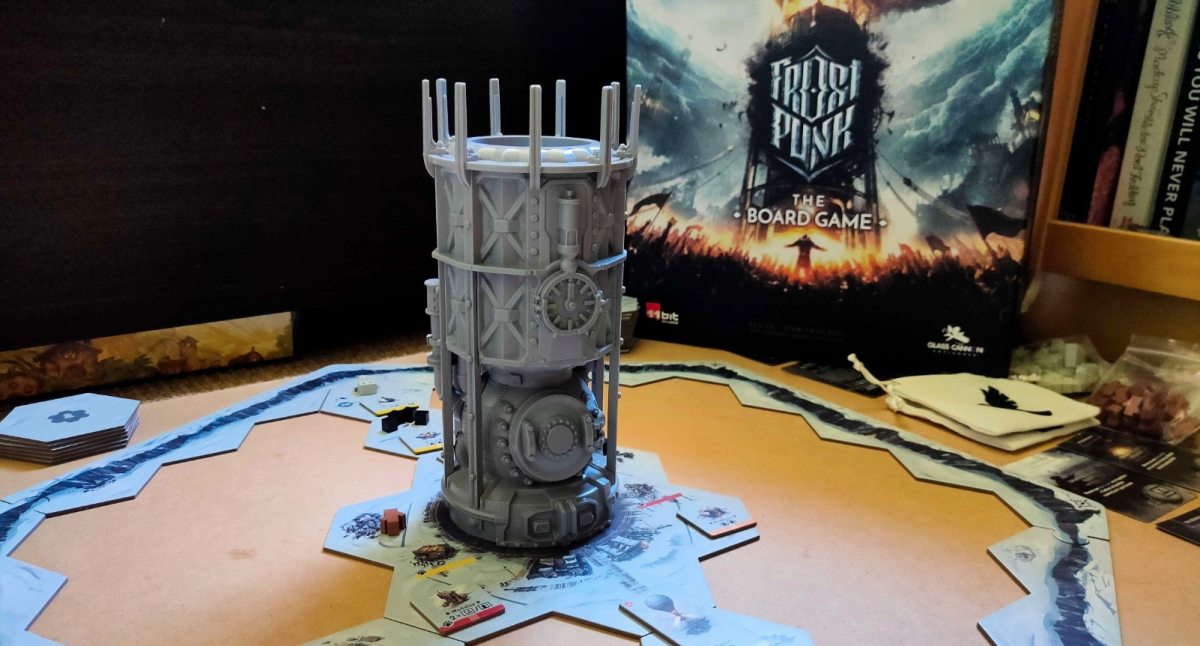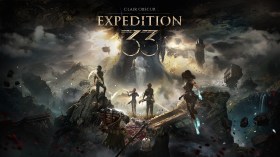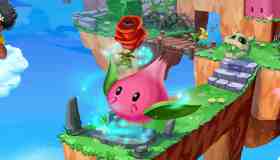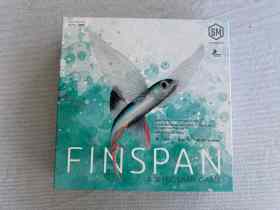Frostpunk: The Board Game is a commanding tabletop adventure – in size, scope, and ambition. It demands a lot from players, but gives just as much back with its harrowing tale of survival in a wintery post-apocalypse. Like the video game from which it’s adapted, the board game spotlights the struggle of humanity in a world plagued by harsh storms – but unlike in the video game, tabletop adventurers must spend their time manually monitoring, analysing, and guiding their meeple flock as harsh dangers wait behind every card reveal.
The win conditions of Frostpunk: The Board Game are extremely strict, including on ‘Normal’ difficulty societies (which tend to be more populous, less sick, and more able than their more difficult counterparts). Even the opening tutorial scenario, which is designed to ease players into the world of Frostpunk, is extreme in its challenge. That’s part of what makes this board game so impactful, and so satisfying.
Survival is rare – and the quest to achieve it will push you to your limits, in the same way your societies are pushed. While the tension inherent in Frostpunk: The Board Game means playing it can feel genuinely stressful, it’s also so wonderfully designed and easy to learn that there remains joy hiding in every meeple movement, and every last-ditch grasp for glory.
Frostpunk: The Board Game – Setup
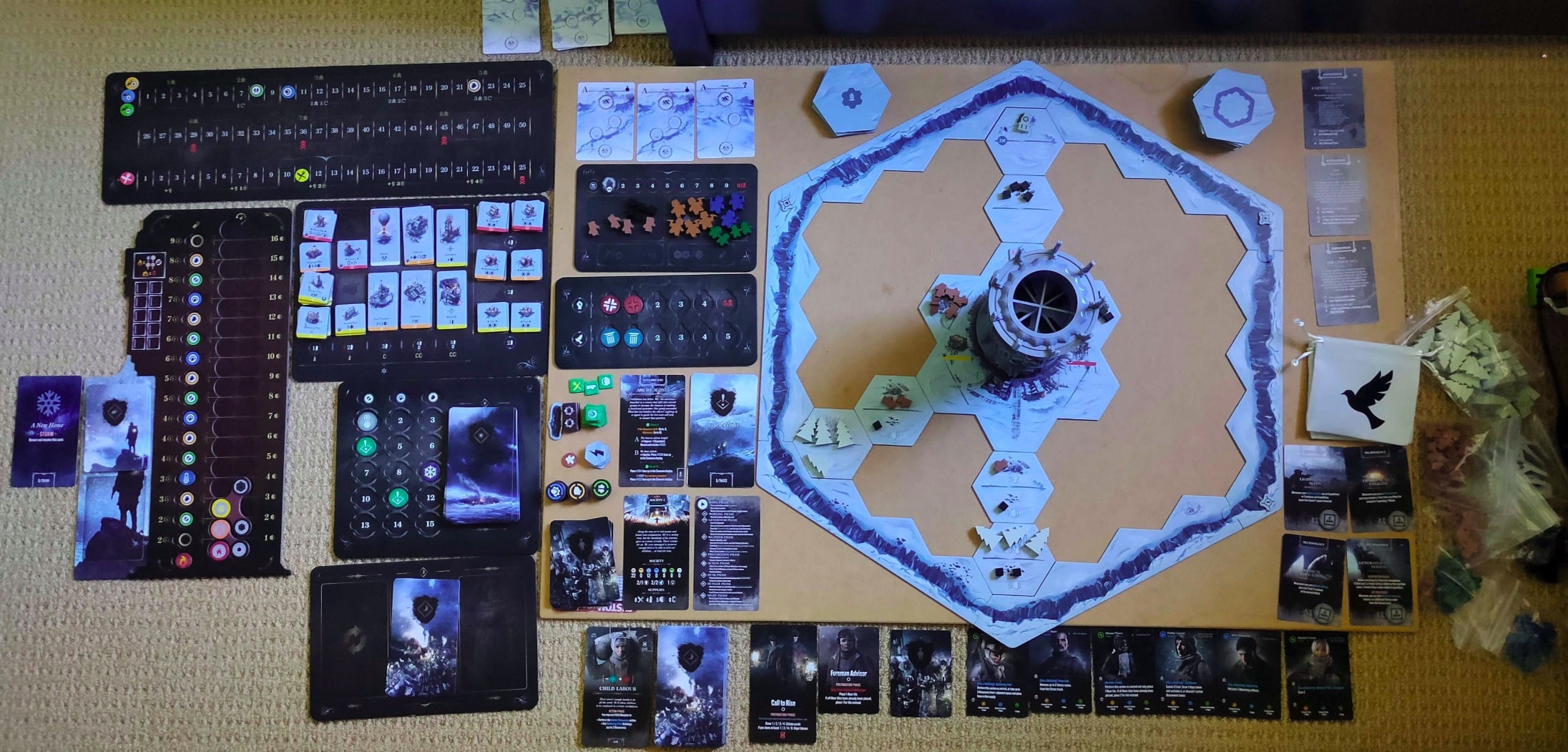
As mentioned, Frostpunk: The Board Game is a whopping big game. It also takes a considerable amount of time to set up. There are multiple cards of different sizes, each with their own function, multiple boards for tracking rounds, generator warmth, citizen health, expeditions, and buildings (all pictured on the left), as well as a main hex tile ‘playing board’ where you’ll deploy meeples to earn new resources, use buildings, and explore (pictured right).
Each token, card, hex tile, and board depicted in the image above comes as a separate piece, and you need to set up this entire array before you begin playing. For a first-timer, the setup (which is guided thoroughly by an instruction booklet) will take anywhere between 1-2 hours. This is because each card and token has a certain place – and there are hundreds involved in gameplay.
That said, while the task is lengthy, the setup itself is supremely easy – thanks to one of the best-written board game rulebooks I’ve personally ever come across. At over 40 pages in length, it may seem daunting, but each instruction in Frostpunk: The Board Game is delivered with a crisp sense of clarity, and descriptive examples that make learning the game incredibly easy.
Read: The best co-op board games for two players
As I’ve mentioned before, rule clarity is the most important part of designing a board game. The action is determined by strict rules, and players must understand what to do at all times, or gameplay will crumble.
Frostpunk: The Board Game is exemplary in its approach to delivering rules. Information is spread out evenly amongst its pages without being packed in, rules are concise and simple, and both the main gameplay and setup processes are well-detailed. You will need around 3 hours with the rulebook before you’re ready to play, but this time passes swiftly, and you’ll learn plenty in the process.
How To Play Frostpunk: The Board Game
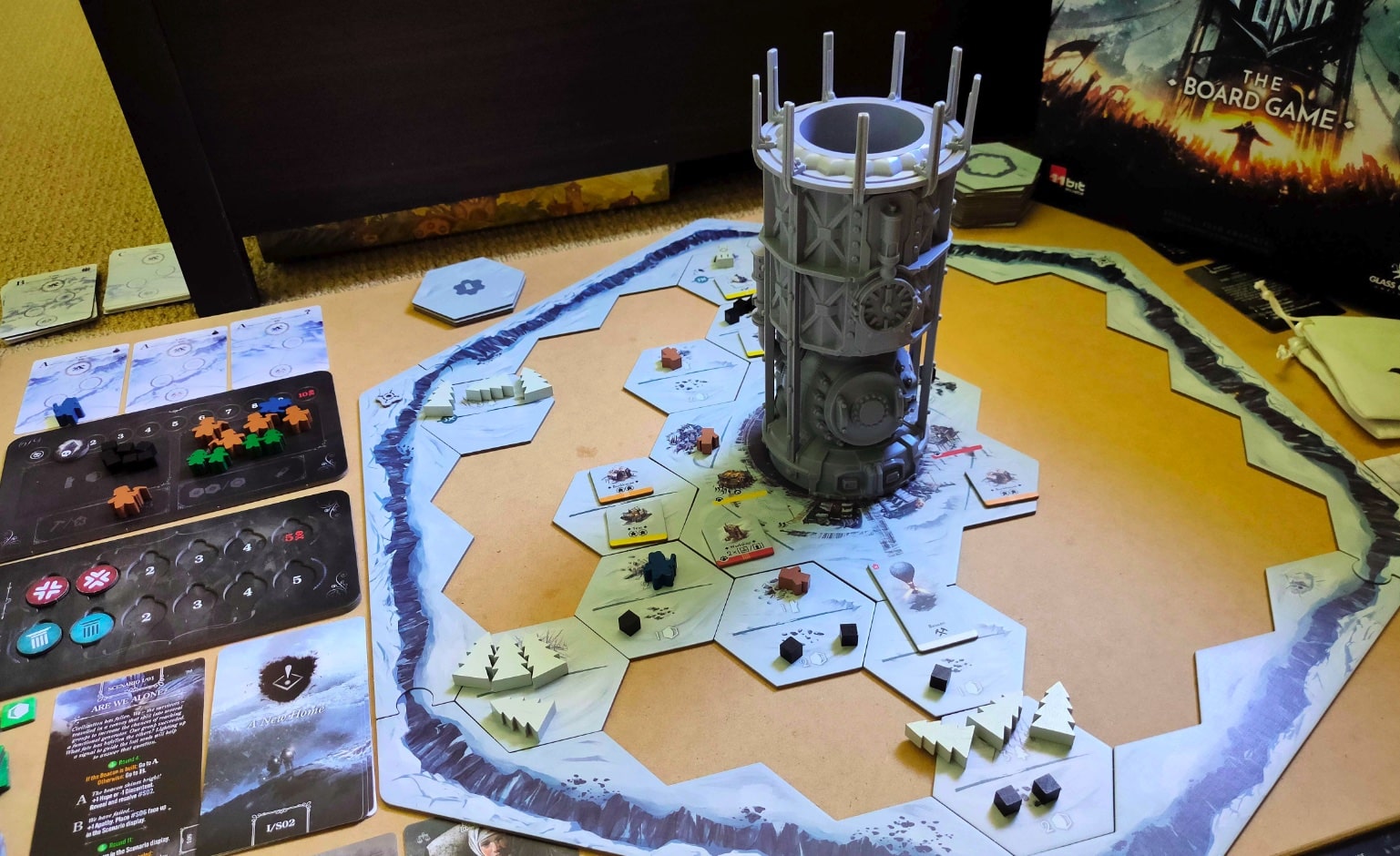
In Frostpunk: The Board Game, you and up to four players act as ‘Advisors’ of a colony of post-apocalyptic survivors attempting to weather a variety of storms, and last through a harsh winter. Your society is populated by workers and children, and each must be protected, sheltered, and fed across multiple rounds, and multiple scenarios.
Your role is to monitor a variety of systems, including the harsh weather, to keep a towering generator powered, and thus keep your people safe.
In your quest for survival, your goals are determined by a unique scenario. There are several base game scenarios included in the main box, and these task players with various achievements – simple survival, building a certain technology, or reaching a set ‘end game’ state. Alongside firm goals, these scenarios also spice up rounds in the game, unleashing new events, storms, and other surprises that may rattle your resolve, and threaten the safety of your people.
While some scenarios have alternate win conditions, for the most part, you’ll be spending your time with the game advancing through 15 rounds, each containing nine repeating phases. At the conclusion of this time – or prematurely – you’ll win or lose, based on your achievements.
These nine phases essentially encompass the following actions:
- Morning begins, and a random event occurs.
- Players check the main generator and fuel it with coal if needed, to protect citizens from the cold.
- Coal is thrown into the main generator statue, and any tokens that fall out contribute to a ‘stress track’ which may lead to the generator blowing up.
- A random weather event occurs, impacting the colony or allowing advancement along some tracks.
- Players take various actions, allowing citizens to discover new regions, gather resources, establish buildings, or go on expeditions.
- If an action is ‘heated’ (in a warm area), citizens are safe. If they take a ‘cold’ action (like discovering new regions), they get sick.
- As night falls, social disputes are resolved. Then, citizens are fed with any food in storage.
- Citizens are then assigned to a shelter for the night, and the phase loop begins again for the next round.
- Any citizen not in a heated shelter at night gets sick.
As these phases progress, players have a number of factors to monitor.
They must ensure there is enough food in their storage to feed every meeple as directed (determined by the round tracker). They must also monitor heat levels, and ensure the generator is providing warm shelter for everyone – but it must not become too stressed, or it may explode. In addition, players need to monitor social content with the established laws and circumstances of their colony. They also need to ensure that citizen sickness levels remain manageable, and that only few citizens die – if any.
Frostpunk: The Board Game features intense strategy
It’s essential that every gameplay factor is considered in every decision made, in every phase, of every round – because Frostpunk: The Board Game is positively littered with ways to fail. If you forge too far into new territory on the map, all your citizens will get sick and die. If too many die, you’ll automatically fail the game.
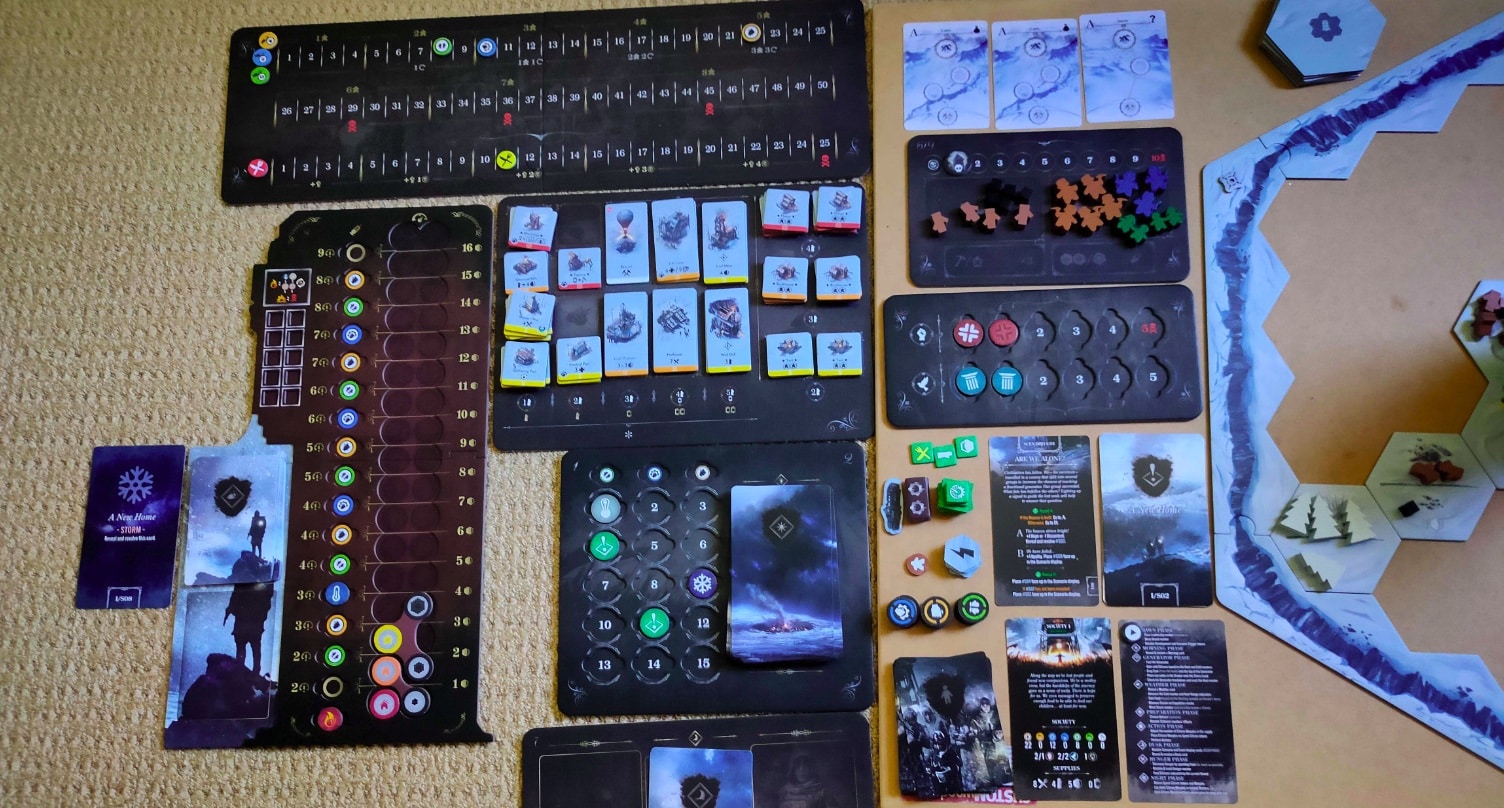
If you focus too much on bringing up the heat of the generator, in an attempt to prevent your citizens from getting too sick, you may end up overloading it. If that happens twice, you’ll automatically fail the game. You’ll also fail if your citizens starve. A growing social discontent, or a sudden storm wiping out your shelters will also contribute to a sudden, rapid decline.
There is chance involved in these circumstances – you can’t always predict when a storm will hit, or how severely it will impact your colony – but you can generally plan for the outcome, knowing intense weather is on the way.
This threat, and the overall theming of Frostpunk: The Board Game means players must preference forward planning and strategy thinking. Establishing a Beacon in the first rounds of gameplay may allow you to undertake expeditions to reveal new resources, citizens, or other benefits – but it may mean some citizens are left without shelter.
Focussing on establishing shelters is a good first step – but you can’t build these until resources are gathered, and you may also risk throwing away good material by building on resource-rich ground. The way these systems and choices interlock is complex, but also logical and easily understood. You just need to spend time thinking about the consequences of your actions, and how one decision may lead to a rampant domino effect.
Arguably, this does make the action of Frostpunk: The Board Game marginally too hard, and too slow – as mentioned, wins are extremely hard to come by, and you’re more likely to fail a scenario than win it first go – but the thrill of the chase feels inspired, regardless.
The way your citizens move, and are moved by their environment, is well-flowing and harmonious. The joy of adventuring comes from this gameplay, and from making clever choices – clever, at least, until your plans are thwarted.
To solo or not to solo?
I played through several scenarios in Frostpunk as a solo player – and in my time, it was hard to see exactly how multiplayer would actually benefit the action. As an Advisor, each player is tasked with monitoring a single part of society. One Advisor monitors the social situation, another is in charge of generator management, and so on.
As a solo player, you’re in charge of every aspect of society, and embody every Advisor.
This frankly makes more sense, as Frostpunk isn’t designed to be a segmented game. You need oversight of every aspect of your colony, and an understanding of how each moving part functions. While segmenting gameplay by tasking individual players with certain responsibilities eases the burden of knowing how to play every aspect of the game, it also feels counterintuitive.
While it replicates the structure of real-life society – some players will insist their portfolio is more important than another, or that their needs outweigh everyone else’s – this system seems designed to sow conflict which would not benefit the already-difficult nature of gameplay.
The flow and decision-making feels much more powerful as a solo player, as direction can be more easily determined, and rounds become snappier. The game is already meaty – the tutorial scenario ran for around 3-4 hours with slow, thoughtful decision-making – and having multiple players with differing goals will likely lengthen this game to grating proportions.
Should players wish to play through scenarios with friends, it’s best to adapt gameplay so that everyone can work together to create a more well-rounded team, with an overall focus on keeping as many citizens alive as possible.
Final impressions
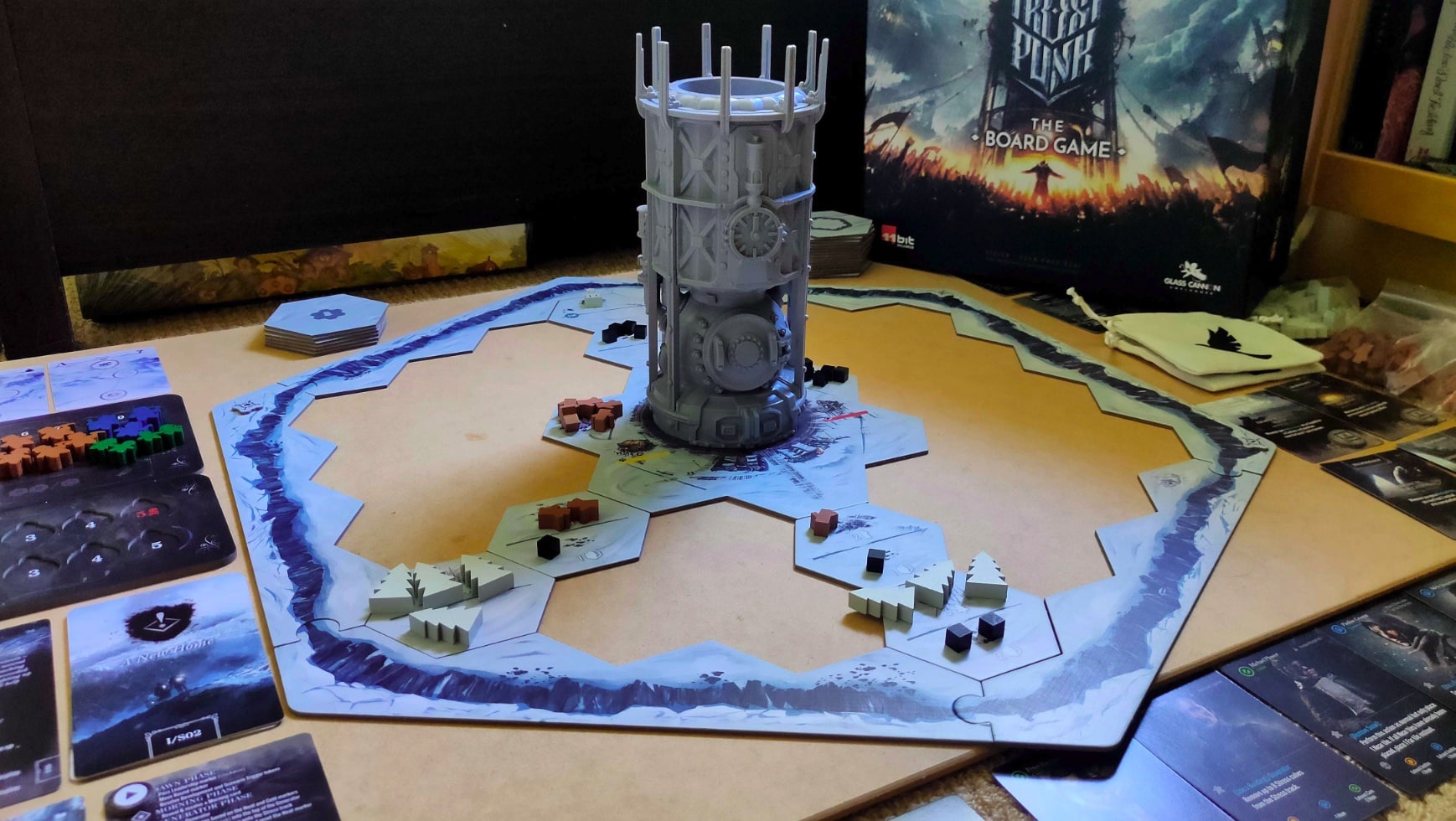
As an adaptation of the award-winning Frostpunk video game, Frostpunk: The Board Game far exceeds expectations. It translates the action of this post-apocalyptic survival adventure phenomenally well, while adding its own sense of style, and neat flourishes.
While the game feels impossibly hard at times, and only gets harder with new society rankings and scenarios, this feature feels by design. It encapsulates raw frustration and terror in the same way Frostpunk does – and while this may alienate players who desperately search for wins and satisfaction in their tabletop gaming, there are plenty who will appreciate the struggle for a solid victory.
With new scenarios keeping rounds fresh, there are plenty of reasons to hop in again and again, vying for a win by attempting to ward off sickness, pursue new technologies, or re-strategise meeple placement. While this will mean setting and re-setting the game’s massive, intimidating boards, the satisfaction of the Frostpunk gameplay loop, and the tantalising dangle of victory, make the whole experience worthwhile.
5 stars: ★★★★★
Frostpunk: The Board Game
Designers: Adam Kwapiński
Publisher: Glass Cannon Unplugged
A copy of Frostpunk: The Board Game was provided and played for the purposes of this review. GamesHub has affiliate partnerships. These do not influence editorial content. GamesHub may earn a small percentage of commission for products purchased via affiliate links.
